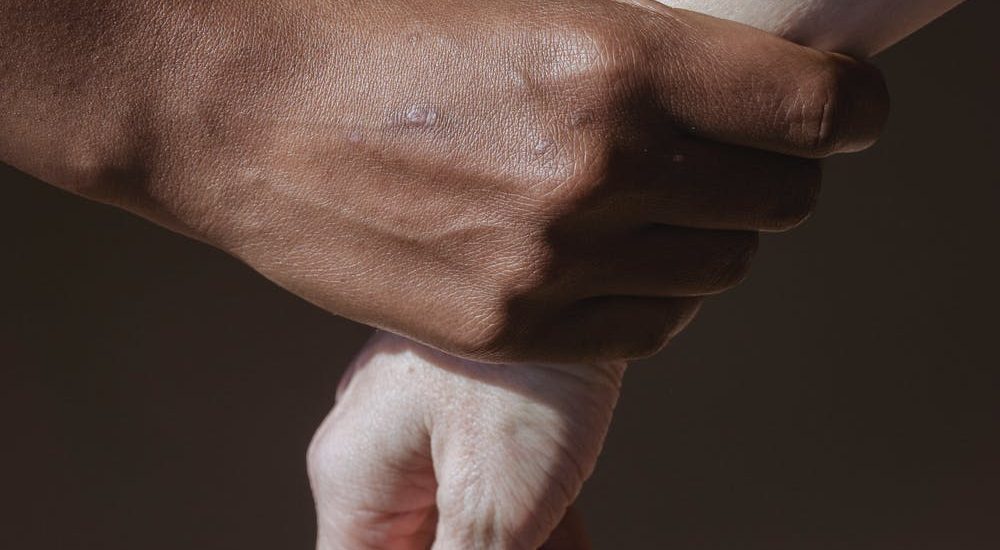Skin shades are a matter of a certain difficulty even for those who have a many-year experience in painting in watercolors. You need to get a natural and deep shade that requires experience, skills and enough effort from you. We offer a technique that has been developed based on our extensive experience and that will help you to easily achieve success in painting skin shades.
To master the technique of achieving the needed skin color, you need to know how to mix colors and have experience in experimenting. But its main advantage is that it can be mastered by the artist of any degree and does not require a lot of materials.
First of all, you need to decide what color of skin you need to accurately depict it. Examine the model you have chosen for painting carefully. You probably already know that there are four color types of people conditionally divided by seasons. Each color season corresponds to a certain color of skin, hair, eyes. For example, the colors of the summer or spring seasons are much brighter than the colors of the winter ones. However, the winter color scheme does not mean that the skin of such people is pure white, rather it is close to milky white or beige.
Thus, at first glance, you can easily understand whether the skin is fair or dark or maybe something between them. At this stage, you also need to decide on the skin shade. Any skin, when carefully examined, has a variety of shades of green, blue. When you determine what shades the skin has, this will help you to understand what colors you need to mix to get the basic color. Here are some tips on how to mix watercolor colors. Remember that such watercolor paints always look richer when applied to the paper and lighter when they dry. Having gotten the desired shade of the model skin, remember and write down the colors used when mixing them for the next time. In order to get the right shade of watercolors, try to minimize the use of white and black when painting skin shades. Here is why you should be careful when using white: in watercolor, this color often contains more pigment which, subsequently, will affect the transparency of the shade and make it flatter. On the other hand, the black color will make the skin shade blurry. If you want to make the skin shade darker, it is better to use brown paint. In any case, you can get the skin color by using such shades as umber, sienna, ocher, red cadmium, yellow cadmium, and others.
So, we have decided on skin color. Always have at hand an image of the shade which you need to check the resulting shade with the desired one. Create a color scheme consisting of yellow, a little red and a minimum of blue paints. This mixture will be the basis for the initial fair skin shade. Rinse your brush in water before dipping it into another color. The resulting shade will be dark, and that is okay because then you will lighten it up. For the medium-shade skin, add some brown color, and two times more of it for the dark-shade skin. To mix the paints, use a special palette. You can use a white plate or any other item with a light surface, for example, a piece of dense cardboard. Then, mix the colors of the basic color scheme. Apply the resulting shade on paper and examine it. It will most likely not suit you and still be very different from what you need, but this is just a start.
In the third step, you need to adjust the shade. As we have already mentioned, skin color consists of shades of various colors: red, green, yellow. You need to experiment with them to get the desired shade. Add each of the colors in different proportions to the basic color scheme until you achieve the needed color.
To get a lighter shade, add yellow and white. Yellow will make the color warmer, and white will make it lighter. Remember that you need to add paint in very little proportions and mix the colors thoroughly. If the fair shade does not look realistic, add a little red, but keep in mind that this color will change the shade. However, a greater amount of red is okay for other skin shades. The red color is needed to get the shade of the tanned skin. Constantly compare the resulting shade with the desired one. In case the resulting shade is too different, you should better mix the colors again.
Here is our tip: based on the resulting shade you need, create several related ones. They will help you to get accent colors. If you add more red color to your skin shade, you will get a ready color for blush for the model’s cheeks.
Let us outline those aspects in your work that you will definitely need. As you have already understood, there is no exact recipe for selecting colors to create skin color. Each artist should find his own recipe for themselves, especially since each sees skin shades differently. There are several rules to consider when painting a person.
Men and women, even if they are of the same nationality, will differ in the shades of their faces. Women have lighter and more silky skin. On the other hand, men have rough and darker skin. The skin of the hands and legs is always darker than the one of the faces. If the face is in the shadow, you should use richer color. But the shadow is not just a dark and brown shade, it can partially consist of cold colors, even with blue hues. Also, in any light, the skin includes warm and glowing parts (for example, ears, corners of the eyes, cheeks, small dots on the nose). Scarlet can help you here; it can be a sub-color for subsequent layers. You should understand that the depicted skin will necessarily consist of both only warm parts and completely cold ones, and the combination of such quite contrasting shades makes the face glow naturally and vividly.
Let us say that the color you chose seemed too dark to you when applied to the paper. In this case, do not add white, otherwise, the shade will become uneven and also make the image less deep. You can fix it this way: wet the brush and, applying paint with strokes, try to get the desired shade right on the image. But do not forget to try the shade on the piece of paper beforehand and wait for it to dry completely.
The artistic depiction of the skin is usually achieved by applying several layers. You cannot achieve this by applying paints only once. You will apply several shades to depict shadows, others for the middle shades, and some more shades will be required to lighten the image. By such a gradual application of shades, you will get a more natural skin depiction. Make the first layer translucent by adding more white color to the eye area to get a contrast between the eyes and skin.
Make it a rule to examine the shades of face skin of people, focusing on the skin in different lighting, divide faces into different areas, note color spots and certain patterns. You know that the skin reflects the colors of the objects closest to it so you can see their reflections on the skin.
Let me provide you with my own algorithm for painting the face skin. I paint it layer-by-layer: first, I paint the basic glow and prepare the colors for the skin sub-color. Then I darken and refine the image on the wet layer. When it is dry, I wet the area I am going to work on with clean water again and make it deeper. I apply a lot of layers until I get the desired result. All this allows you to get a porcelain skin color that seems to glow from the inside. Once I have decided on the basic colors and shades, I paint the eyes and the basic facial texture, darken the corners of the nose and paint shadows on the lips. I do this on a dry painting. Here, you should follow the from-general-to-specific rule: first of all, apply the entire color scheme and then refine the details. I always try to keep the previously chosen eyecatcher the same during the detailed and layer-by-layer work with the model’s face.
Watercolor seems to be difficult in painting, but do not be afraid of it. In order to learn how to paint with watercolor, all you need is just start. Feel free to mix bright colors; sometimes you do not need to be photographically accurate, it is not always attractive. The personal view of the artist is much more important.
Author: Nazym Rakhimberdiyeva


